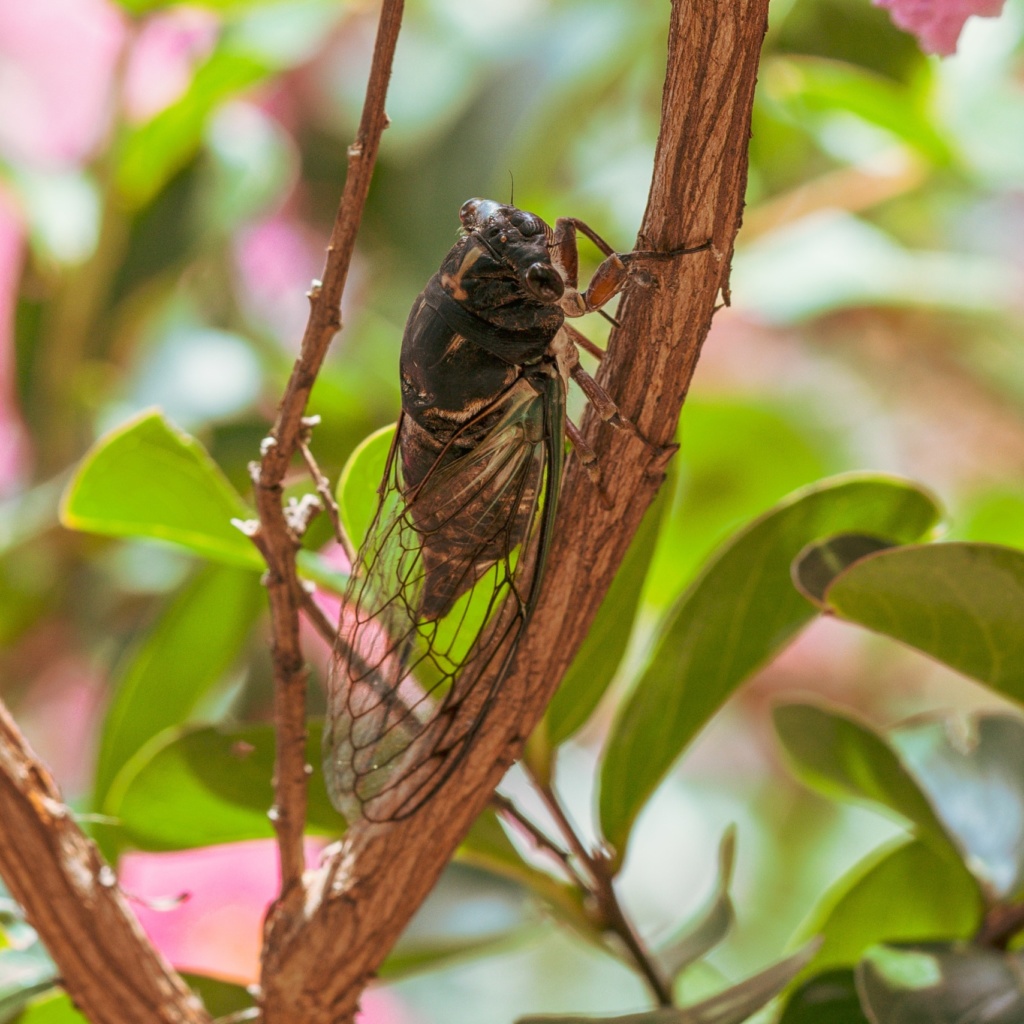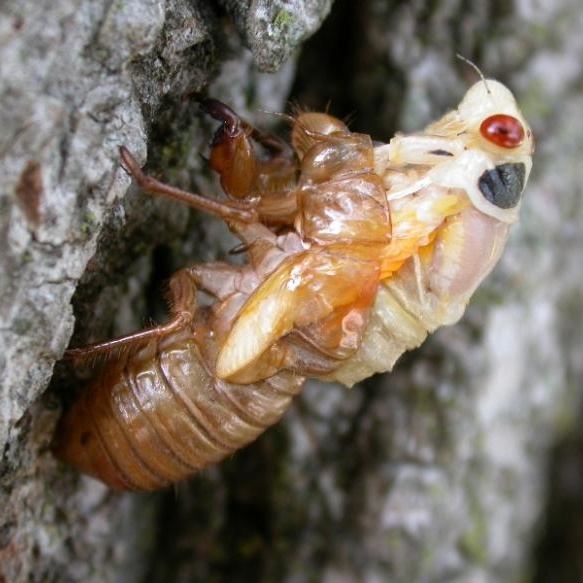Cicadas
This spring, “Brood X” is emerging in 15 states including Illinois. This is one of the largest broods of Cicadas and included three different species. How will this affect your trees?
Life Cycle of Cicadas

“Brood X” will be emerging from underground sometime between May and June of 2021. After 17 years underground, nymphs will be climbing out of the ground (usually at dusk) and onto trees, or any vertical object, to finish their maturation.
They will shed their exoskeletons and leave them behind. Their soft bodies will harden and they will begin the mating process. Mating is the reason for all the noise we will hear this spring and early summer. Adult males use their tymbal organs to attract females. Females respond with a clicking noise.

Adult Cicadas only live 20-25 days. They spend their short time above ground mating and laying their eggs. Eggs are laid by cutting slits in small twigs and branches and depositing 20-30 eggs within. A female can lay as many as 600 eggs in her lifetime.
Eggs hatch in 6-10 weeks. The nymphs burrow under the ground and feed off the roots of trees. There they will stay until they emerge in another 17 years to start the process all over again.
Will Cicadas cause damage to your trees?
– While cicadas cause minimal damage to small branches of mature trees, they can cause more significant damage to the branches and roots of very small trees. Young trees are most at risk (2″ or smaller in diameter).
– Branches can be weakened when the female Cicada slices them to deposit her eggs. The damage may not be evident right away, as branches may break off later or the following year.
– When the nymphs hatch they will fall to the ground and burrow down into the dirt. There they will pierce the roots of the tree and consume xylem fluid. However, for most trees this is not an issue. Only very young trees are at risk.
– Oak, Apple, Hickory, Peach and Pear trees are most susceptible to damage, while Spruce trees are generally not affected.
– Cicadas do not cause disease, sting or bite. They are mostly a harmless nuisance. Almost every animal and many insects enjoy feeding on Cicadas. Essentially defenseless to predators, they have survived as a species for thousands of years by emerging in-mass to breed.




What can be done to protect your trees
– Insecticides will kill adult cicadas, but not eggs, so spraying trees is not usually recommended. Soil injections may provide some protection to smaller trees. Both methods have been proven to be less effective in preventing damage than using mesh covering.
– Cover twigs and branches at risk with fine mesh, cheesecloth or tulle. The mesh must by 1.0 cm to prevent damage. Wrap the material tightly around the trunk as well, to prevent cicadas from crawling up. Becareful that birds and wildlife do not get caught in the netting.
– Use the spray of water from a hose or manually remove cicadas from other areas you don’t want them.
– It is helpful to prune branches of mature trees after they have been damaged to prevent breakage and reduce susceptibility to disease and it may be a good idea to delay the planting of any new trees this spring.